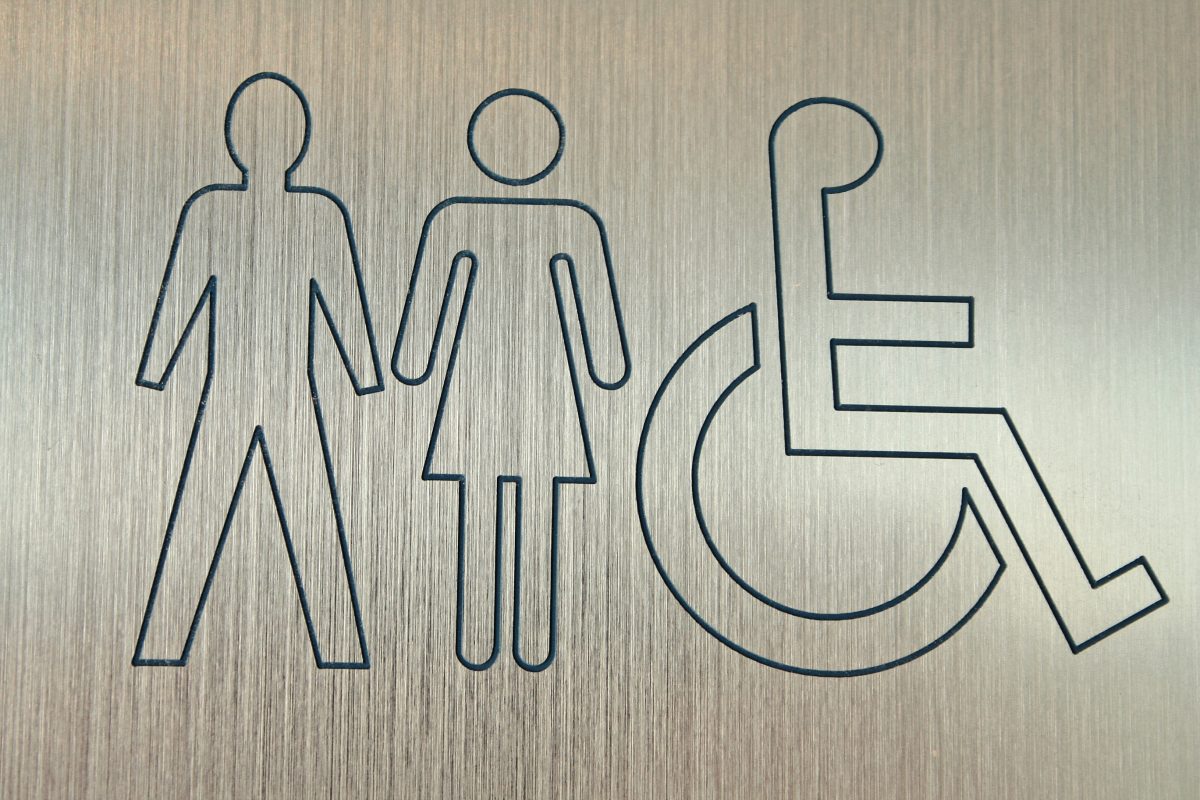Jean Hewitt, Director of the Centre for Accessible Environments, explores the subject of toilet design and supply and some of the issues for today’s society
Accessible toilets are a fundamental component of our lives – their availability can affect our ability to travel, go to work, undertake everyday activities and participate in a range of leisure activities and interests. Many public toilets have been closed and user groups are concerned over the lack of access to suitable toilets and the impact this has on their lives; other user groups are concerned that the design of toilets no longer meets their diverse needs.
Who is the accessible WC for?
The accessible WC, while possessing many features that have been designed specifically for wheelchair users, is also intended to meet the needs of people with other disabilities including many conditions that are hidden. Two examples are people who use a colostomy bag and people who have a toilet anxiety or phobia.
Toilet anxiety/phobia is an overarching term to describe a number of issues related to using toilets, where people experience concerns or anxiety about a range of toilet needs, including being too far from a toilet or having an accident in public. Such anxieties can affect almost anyone and the symptoms range from mild to severe. An accessible toilet is sometimes the only facility that will meet the needs of some sufferers.
Several organisations have developed a variety of notices to overcome the upsetting issue of people with genuine conditions being challenged or ‘tutted’ at for not appearing to have any need to use the facility. We hope the toilet door signs will largely remain unchanged, however, as many people rely on the consistent use of clear symbols, including some people with low vision, dyslexia or whose first language is not English.
The devil’s in the detail
We could share hundreds of pictures of misleading signs and also poorly fitted out accessible toilets; common findings being fundamental safety issues such as the wrong height pan for safe wheelchair transfer, missing or unstable grab rails, or an emergency alarm that isn’t audible by anyone with responsibility to help. But what about the smaller details inside, like a missing coat hook or no shelves – does that really affect anyone in a big way?
The answer is a big “Yes” – and more so now than ever. Colostomy UK contacted CAE last year to discuss their concern over the disappearance of cisterns from accessible toilets as hidden cisterns are favoured in many new buildings. The exposed ceramic cistern top is regularly used as a shelf for colostomy bag users – particularly in the absence of a corner shelf for this purpose. It is estimated that one in every 500 people in the UK live with a stoma so this is a hugely underestimated need, with many designers now opting for cisterns enclosed behind panelling but forgetting to insist on that important corner shelf in accessible WCs.
Why not also consider the addition of an appropriate shelf to any self-contained WC cubicle that has a basin, particularly as that basin is often larger and could potentially have a shelf or decent sized basin surround? Furthermore, the inclusion of two additional coat hooks near to the basin allows the opportunity for a bag to be positioned within easy reach. If the mirror is longer and extends to the basin rim, this makes the experience much easier for people who prefer to stand.
Changing Places Toilets
A Changing Places Toilet is intended for people who cannot use standard accessible toilets. This includes people with profound and multiple learning disabilities and other conditions such as motor neurone disease, multiple sclerosis and cerebral palsy, as well as some older people. It is a specialist facility that includes a changing bench and hoist and is not a replacement for an accessible WC designed for independent use, so should always be provided in addition. (There have been several instances recently where we have heard of designers attempting to combine the two).
The Changing Places toilet initiative started just over 10 years ago and in July, it celebrated its 1,000th installation. But this was only possible with the help of a voluntary army of campaigners.
Without question, the UK is leading the world in Changing Places provision, with countries such as Australia and the US only just beginning their Changing Places journey. However, there is no place for complacency as there are still many parts of the country where a Changing Places Toilet is very difficult to find.
There are also many families who are desperately in need of such life-changing facilities but are completely unaware of their existence. Organisations assume that all they need to do is to provide a Changing Places Toilet and people will come flocking to use it. More often, a concerted media campaign is needed to reach people who have become socially isolated for the very reason that it’s so difficult to go out when there is nowhere equipped to assist with transferring and changing. There is therefore a risk that some local authorities can perceive a lack of demand as a lack of need, whereas in fact it is often a lack of awareness. The provision of a Changing Places Toilet is a change that sees some of the most vulnerable people in society able to enjoy a new freedom – but only if there is sufficient promotion to make everyone aware of its existence.
Challenges for the future
Here in the UK, we are seeing a growing debate around the need for gender-neutral toilets and appropriate signage, but no universal approach has been agreed at this time. One that is particularly worrying is the sudden surge of places where male and female separate facilities have been “neutralised” without adjustments to the layout and fittings, resulting in gender-neutral facilities that still contain urinals. Also, toilet cubicles that do not afford the privacy of a full-height door or have shared basins are really unsuitable for changing to mixed use, yet such practices seem to have been adopted recently by some large organisations.
There is an increasing need to recognise cultural differences around the use of toilets and sometimes this can conflict with other needs. There is a cultural need, for example, for gender-specific accessible toilets for some faiths, but consideration must also be given to the fact that an accessible cubicle within a gender-specific facility will not meet the needs of someone being assisted by someone of a different gender. A recent visit to Dubai highlighted to me the sensitivity around the use of unisex toilets (for example, a female unable to use a facility that has been used by a male) and how difficult it can be to balance a spectrum of different needs.
The benefit of overseas visits is not only to understand other cultures but also to see designs different to our own. We have some excellent standards in the UK but that is not to say we cannot learn from others. During a recent visit to Latvia, for example, we came across a WC pan that had an integral drop-down support rail on both sides. Our host, a disability charity, reported that this arrangement had been much welcomed by disabled people, who found the rails much more reliable than fixed wall rails. Many access professionals have stories of grab rails that are not robustly fixed here in the UK too, so perhaps this is a design worthy of looking into!
Jean Hewitt
Director
Centre for Accessible Environments
Tel: +44 (0)20 7822 8232
Twitter: @CAE_info














